

Max Davies
2026 GWM Cannon Ultra review
6 Days Ago
With the Roma, Ferrari has pushed the design envelope to the very edge and pulled it off. It delivers on all counts and just maybe the best daily from Maranello ever.
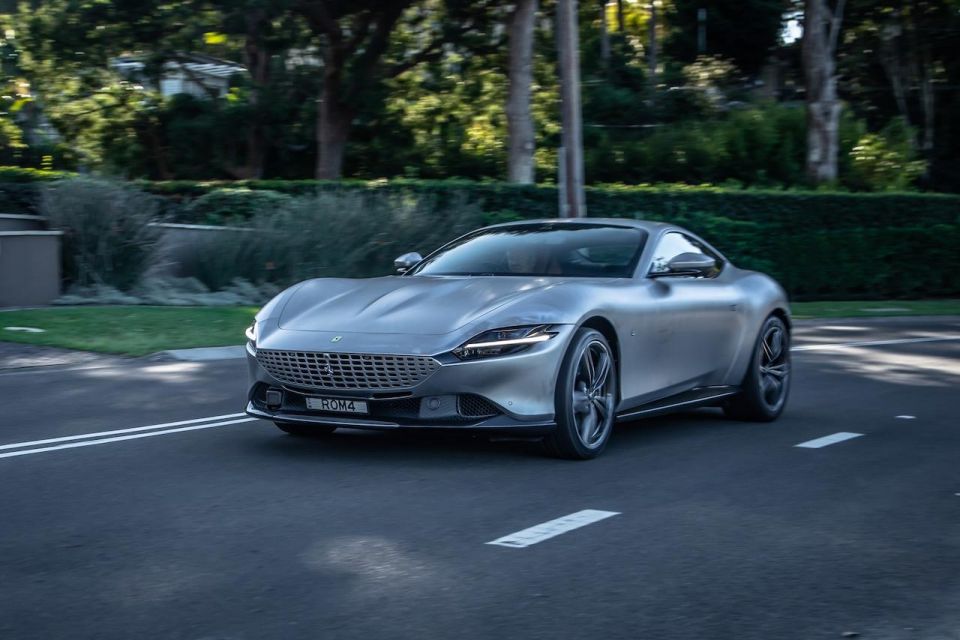
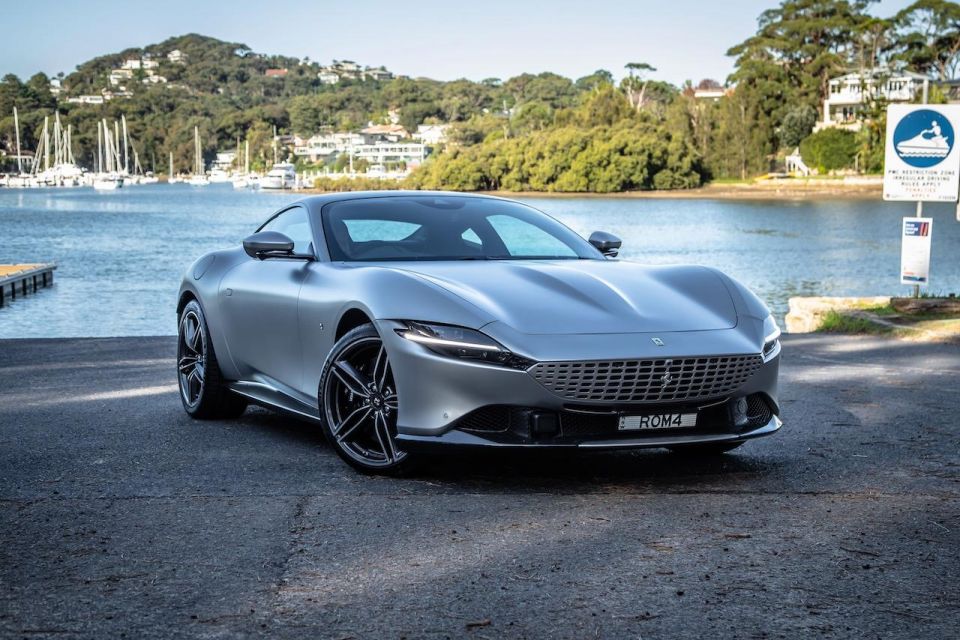

Senior Road Tester
New from
$409,888
excl. on-roads

Senior Road Tester
New from
$409,888
excl. on-roads


Senior Road Tester
New from
$409,888
excl. on-roads

Senior Road Tester
New from
$409,888
excl. on-roads
Quickly see how this car stacks up against its competition. Select any benchmark to see more details.
Where expert car reviews meet expert car buying – CarExpert gives you trusted advice, personalised service and real savings on your next new car.
The Ferrari Roma takes its cues from Grand Tourers (GTs) of the 1960s, like the 250 GT Lusso and Berlinette, it’s the most contemporary and one of the most daring designs penned by Flavio Manzoni and the Ferrari Centro Stile.
It’s a Ferrari like no other, breaking the design rules entrenched into the brand’s DNA. But when you take a deeper dive into the history of the Prancing Horse, the Roma embodies more of that storied past than you might imagine.
No question, the Lusso’s shark-nose grille is an obvious design cue on the Roma, but further back there’s also the 1954 Ferrari 735 S Monza Spider by Scaglietti, as well as the Spider 375 MM.
The other influence Ferrari cites to the look and feel of the Roma is the ’50s and ’60s Italian lifestyle itself, a resurgence of La Dolce Vita.

Combine those influences and you’ve got all the cues with which to create a car as unique as the Roma, from the two-plus-two seating and fastback coupe shape to the shark-nose grille. It all comes together beautifully in what is arguably the most modern production-series Ferrari.
Despite the badge and even the nameplate, the Roma is still unlikely to appeal to Ferrari diehards bent on V12s and mid-engine sports cars. Frankly, before spending time behind the wheel, I would have put myself in that category.
Noticeable for their absence are any sign of Ferrari badges on the front three-quarter panels, designed that way for the sole intention of drawing the eyes to the super-smooth side panels of the Roma.
That same understated purity is also on display at the rear of the car, thanks to a largely hidden active rear spoiler integrated into the rear screen itself. Don’t bother looking for a button to raise or lower it, it only triggers at 100km/h and can set itself in three positions.
To give you an idea how effective the whole system is, the Roma generates 95kg more downforce than the Portofino by employing vortex generators on the front underbody as well as the rear wing, both of which help balance the car and reduce drag at the front.
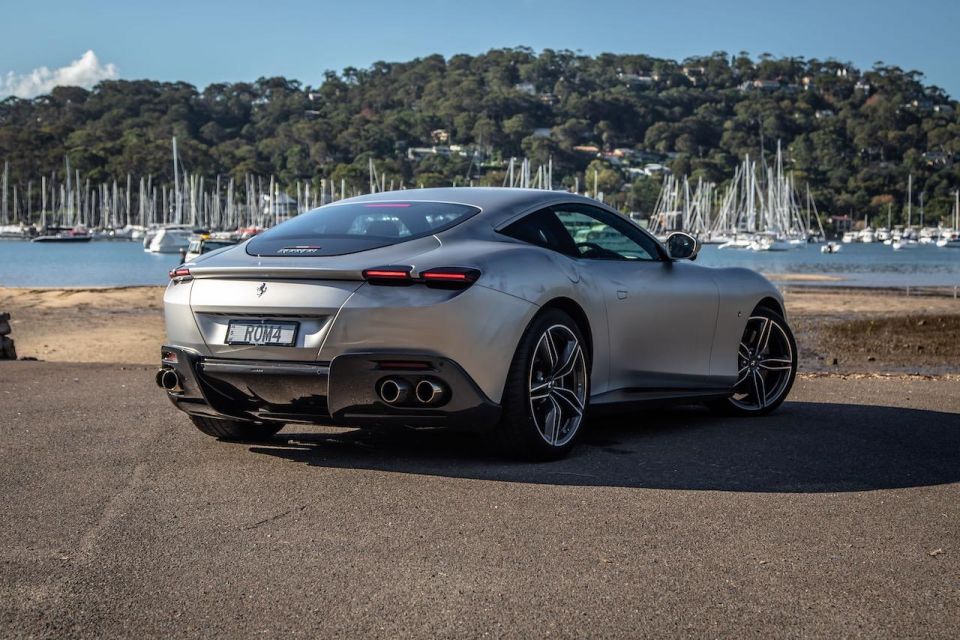
Back to the rear of the Roma, which is unlike anything we’ve previously seen from Ferrari and characterised by the ultra-thin taillight assemblies that have replaced the more traditional round light housings.
In hindsight it was a window into future of the brand because the same styling has also appeared on the latest mid-engine Ferraris like the SF90 Stradale and yet-to-be-released 296 GTB.
As beautiful as the Roma is (tell me I’m wrong), it’s a Ferrari, and by definition not slow.
Make up your own mind on the design, but I can tell the Roma is spectacular in the metal once you’ve had a chance to appreciate the curves and cues from the past, as well as a willingness to push the design envelope further towards the edge.
It grows on you as each hour you spend with it passes. I’m now totally besotted.

The Ferrari Roma is priced from $409,888 before on-road costs, whereas the entry-level Portofino convertible starts from $403,888 plus on-roads.
The newly-released and updated Ferrari Portofino M demands a reasonable premium for its more focused dynamics by asking $438,500 before on-roads.
The Roma is not without some rivals in the coupe department, namely the Aston Martin DB11 V8 ($406,595), Bentley Continental GT Coupe V8 ($408,900), and Mercedes-AMG GT R ($373,277) top the list, while even the Porsche 911 Turbo is a competitor at ($405,000).
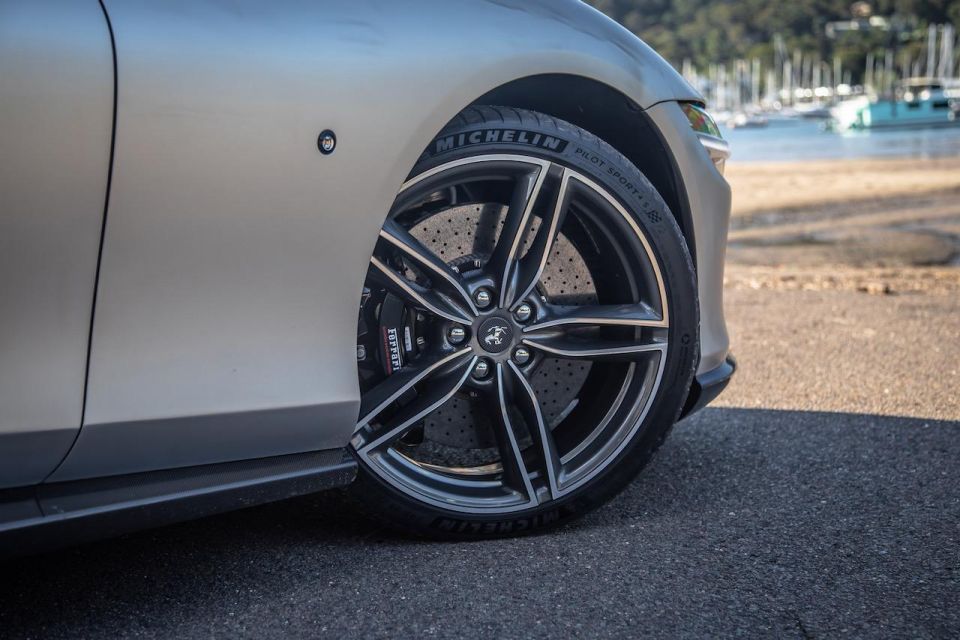
Buy your new car without the stress. It's fast, simple and completely free.

Great service from Travis and team, second time I have used this business would not hesitate to recommend them to anyone
Craig C.
Purchased a Ford Ranger in Sunshine Coast, QLD
CarExpert helped Craig save $7,224 on his Ford Ranger, now let us save you on your next new car.
Get your BEST priceIt would be wrong to judge a new Ferrari on the level of standard kit, because so many of them are bespoke orders with any number of optional extras added to better customise the purchase,
With more affordable models such as the Roma, you can expect all the kit you need if you’re lucky enough to call it a daily.
Standard kit includes:

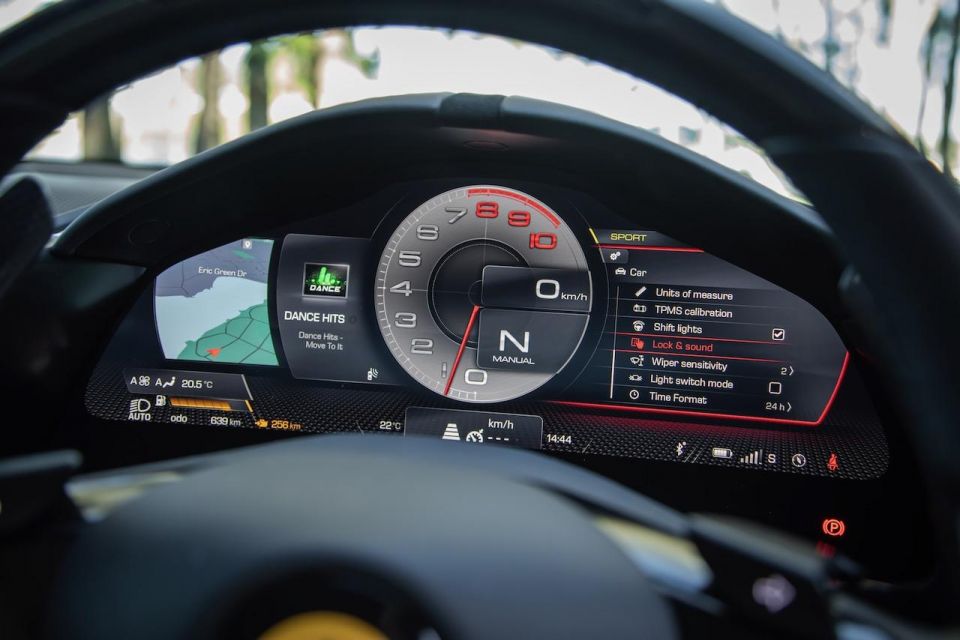
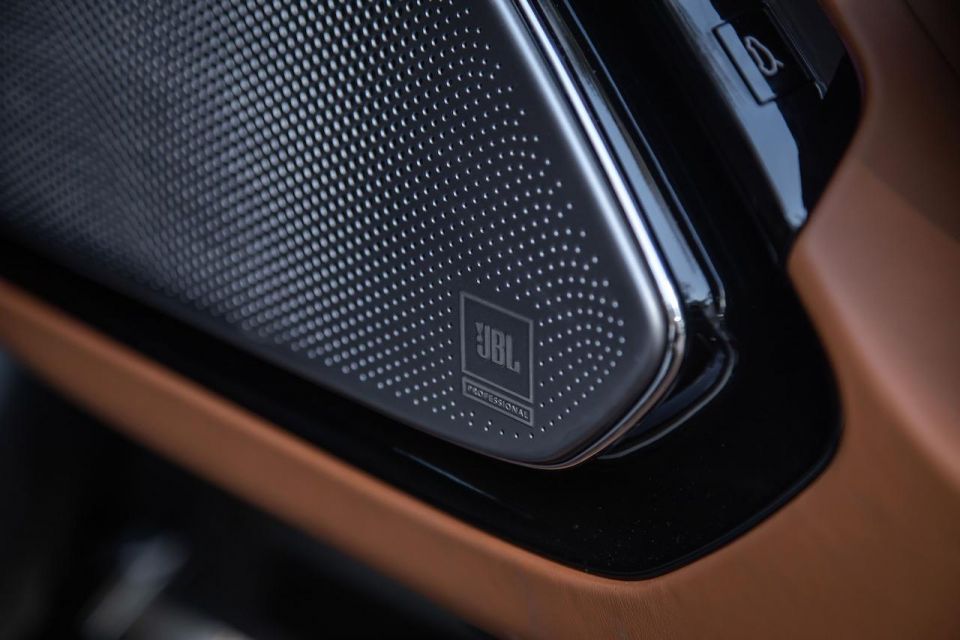
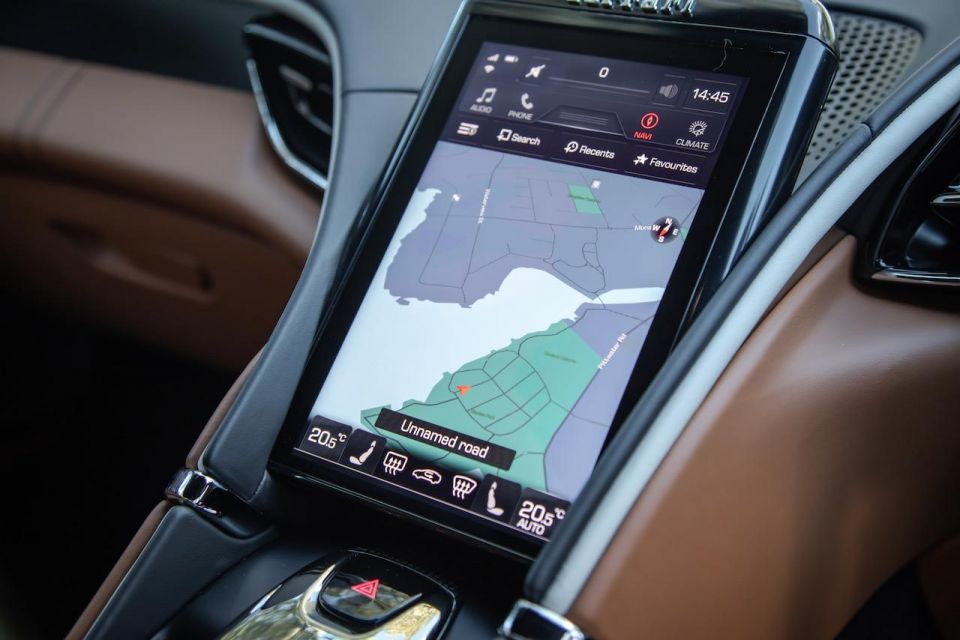
Our tester was also fitted with plenty of tasty options, as so many Ferraris are. They included:
Total cost with options excluding on-road costs: $599,731.

Ferrari, like almost every other exotic carmaker, doesn’t crash test its vehicles given the cost of building these cars.
However, standard safety equipment on-board our Roma tester, includes
Moreover, our tester was also equipped with the optional ADAS package including autonomous emergency braking, lane-departure warning with traffic-sign recognition, blind-spot detection with rear-cross traffic alert, and a surround-view camera.
The Roma also gets Ferrari’s latest sixth-generation side-slip angle control, traction control, and vehicle dynamics control with the trademark Manettino switch on the steering wheel.

The aroma of Ferrari’s leather is always intoxicating, and inside the Roma is no different. That hide is everywhere inside our tester – from floor to ceiling if you count the optional combination leather/carpet mats with Roma embossed on the side. Beautiful.
It’s the same story with the carbon-fibre/leather steering wheel, complete with trademark extra-long paddle shifters and fully-lit Manettino switch with an ominous ESC Off marking to its extreme right.
That’s it for physical switches and dials. The rest of the switchgear is completely digital – a mix of capacitive buttons and haptic pads. Even the door openers are the actuated by those buttons; everything else including the start/stop button is capacitive, in this case, on the steering wheel itself.


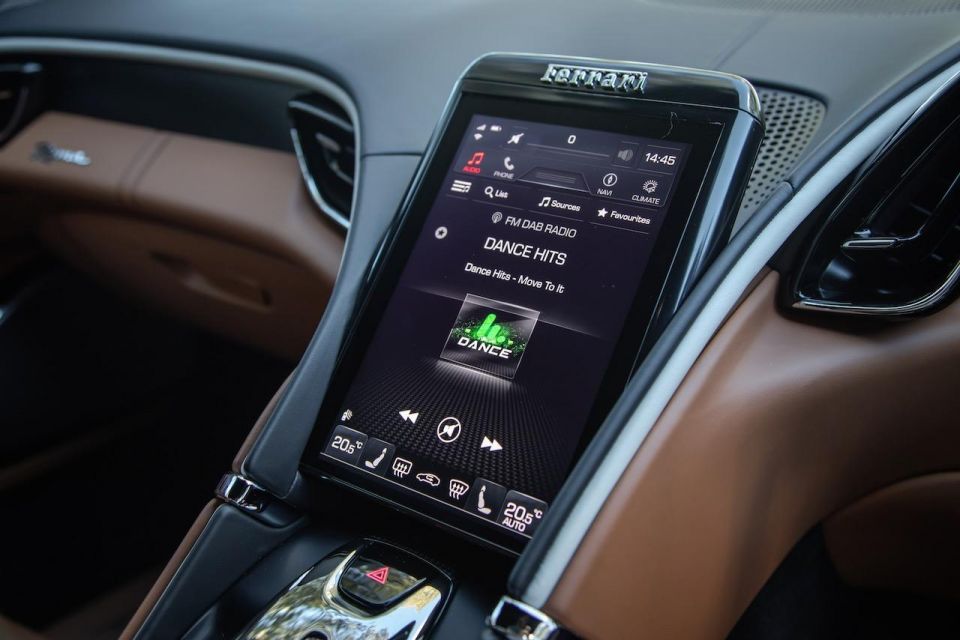

The 8.4-inch centrally-located touchscreen looks larger than its measurement might suggest and the system is quick and easy to navigate for first-timers.
The centrepiece, though, is the super-sized digital instrument display that’s endlessly configurable, although there’s a lot going on around the centrally-located rev-counter that also displays the gear position.
The fact Ferrari has gone all-in on the digital front takes a bit of getting used to, but once you’ve got it down you’ll find yourself changing displays periodically, just to suit the driving conditions or your mood.
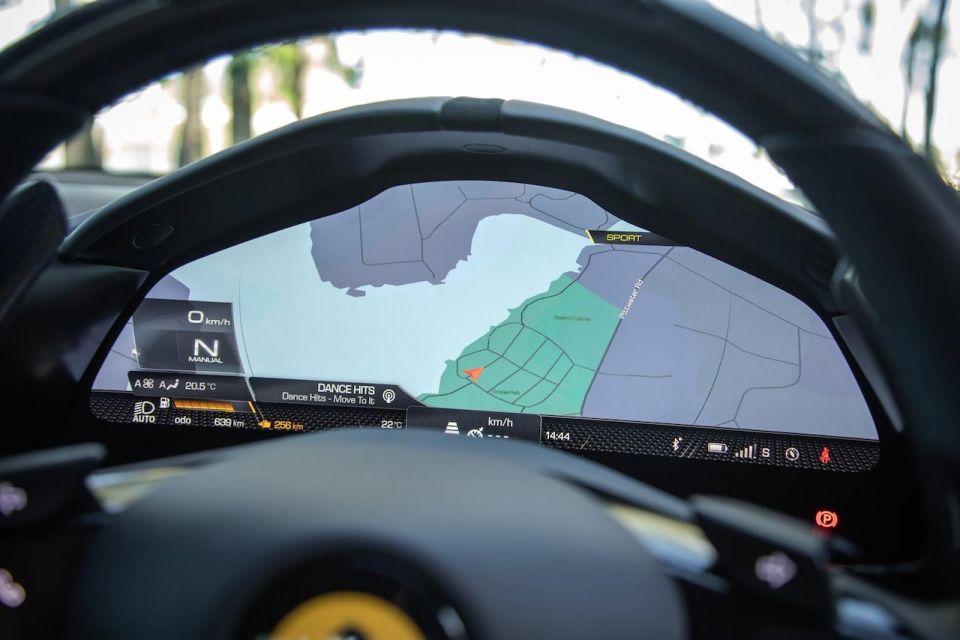



Ferrari says the digital move with Roma is all about “eyes on the road, hands on the wheel”. It’s a bold move, as is the exterior design, and is likely to appeal to a new type of Ferrari buyer. I also reckon the diehards will come to appreciate the model’s too.
Back to those optional leather-upholstered seats. They resemble a luxury version of a genuine racing bucket only 10 times more comfortable, with all the bolster you’ll ever need no matter how hard you want to drive it.
The centre-console bridge provides good separation between driver and front passenger, but also houses one of the coolest electronic shift gates in the business – a nod to the old-school, open-gate manual shifter housings now coveted by purveyors of classic models.


However, there isn’t a lot of room for odds and ends like wallets and keys, just a small cubby hole behind, as well as relatively narrow door pockets.
Clearly, you’re not going to have any adults to ride in the back seats, as they resemble those in the Porsche 911.
Last but not least, it’s worth noting the light, leather-wrapped Roma key fob, with a Roma plaque set into the leather on one side and Cavallino on the reverse side. It’s simple and elegant, a nice piece of design.

Ferrari’s twin-turbo V8 engines are now the benchmark for high-end sports cars after taking out the International Engine of the Year four years in a row.
That doesn’t mean there haven’t been any changes. The 3.9-litre twin-turbo V8 in the Roma has new cam profiles, a speed sensor which allows the redline to be increased by 500rpm, and a Petrol Particulate Filter (PPF) which complies with Euro 6D anti-pollution standards.
It makes 456kW of power from 5750 to 7500rpm, and 760Nm of torque between 3000 and 5750rpm, with maximum engine speed set at 7500rpm.
It’s mated to a new eight-speed dual-clutch transmission derived from that in the SF90, which is 6kg lighter than the old seven-speed unit and boasts longer gear ratios and faster shifts.
The Roma claims to go from standstill to 100km/h in 3.4 seconds and to 200km/h in 9.3 seconds, while top speed is north of 320km/h.

Don’t let Roma’s svelte body and beautiful lines beguile you into thinking this low-level Ferrari is less capable than what you might expect of an (affordable) GT from the foundries and engine shops inside the gates at Maranello.
There’s something about climbing into a new Ferrari and firing up the engine. It’s a feeling I don’t get in any other car except maybe a limited Aston Martin like the GT12. Even then, the heritage of the marque and unique ambience behind a Ferrari steering wheel, makes you feel like the ‘force is with you’.
Hit the not so real starter button (it’s not red), and if you’ve ever piloted a Ferrari, you’ll recognise the higher-than-normal tempo of the engine idle immediately.
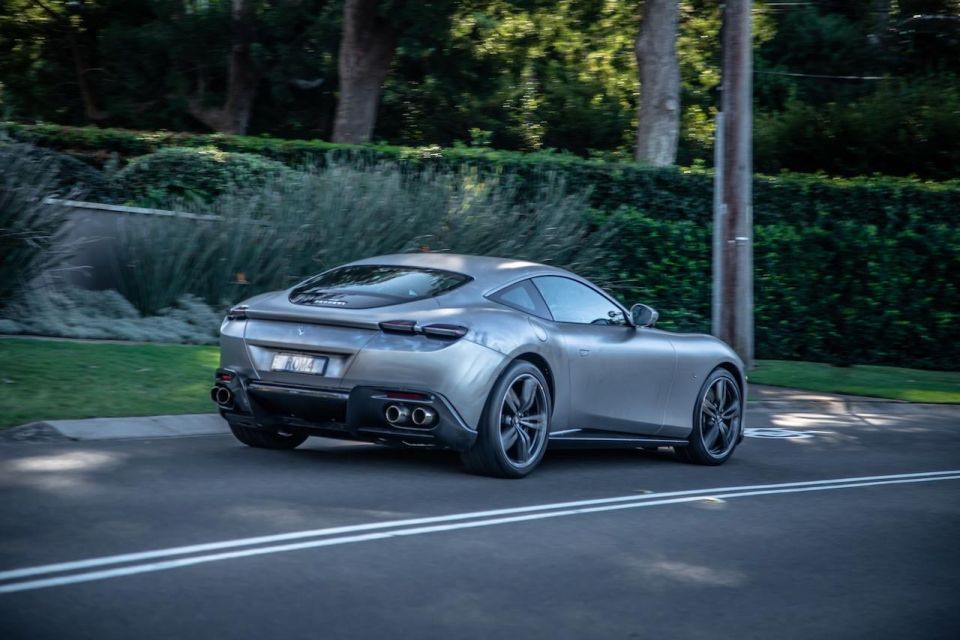
Where expert car reviews meet expert car buying – CarExpert gives you trusted advice, personalised service and real savings on your next new car.
As refined as this front-engine Ferrari is, there’s no masking the underlying race-car tone and ferocity that can be unleashed behind the smooth-revving power unit.
You’ll want to switch the Manettino to Sport from the get-go. Race mode is fine for dry conditions but leave ESC Off for the track. Auto is fine in traffic, but whenever the road ahead clears, toggle down to for manual and experience what feels like the quickest shift in the business. Yep, noticeably quicker than a PDK.
Actually, Race mode, and even Sport will induce intuitive auto shifting that’s uncanny, especially on the downshifts coming into a corner, but pulling the carbon-fibre paddle-shifter raises the thrill behind the wheel, especially when you bang it down a couple of gears.

Open it up in second through third, and the pace is properly rapid. I doubt you’ll get a chance to hit fourth in the city, such is the speed at which the Roma covers ground. There’s no lag to speak of – throttle response is the quickest in the sports-car business, in my mind.
Ferrari steering is generally lighter than rivals, and it takes some getting used to. To be honest, I’d prefer a bit more heft, not that there’s a lot of arm twirling required here given the razor-sharp response.
The handling and chassis balance is sublime. It helps that the Roma is equipped with an arsenal of electronic wizardry, including the third-generation electronic differential, sixth-generation side slip angle control, and Ferrari’s dynamic enhancer.
The side slip system incorporates an algorithm that estimates (precisely) sideslip to the slew of on-board control systems, while the dynamic enhancer is a lateral control system that lightly adjusts brake pressure depending on available grip, or lack thereof.

Once or twice we gave it some curry, and even though the rear end wiggled a bit, it all felt totally natural and under complete control.
Brakes, too, are off the scale in their ability to pull the Roma up at speed. The car doesn’t move around even under full-force brake pressure and the pedal feel is superb, making it very reassuring for the driver (and no doubt any passengers). Not surprising, really, given the 390mm ceramics up front and 360mm out back.
Where the Roma (as well as every Ferrari I’ve driven in the last five years) really delivers is in ride comfort – even in Sport. It’s astonishing that a front-mid engine GT can be hustled into tight corners with quick changes of direction and yet at the same time provide complete bump compliance, no matter what drive setting you’re in. Surely, it’s this level of engineering that warrants the high prices these cars demand.
If all that doesn’t excite, surely the engine/exhaust note is enough to stir the soul. Now don’t get me wrong, there’s nothing to rival the naturally-aspirated Ferrari V12 in an 812 Superfast or the eight in the 458 Speciale… but as far as twin-turbo V8s go, the Roma delivers a properly visceral and unique acoustic experience.

Ferrari offers a three-year/unlimited-kilometre warranty on all new production models, along with a maintenance program which covers all regular maintenance for the first seven years of the car’s life.
Service intervals are at either 20,000km or once a year, whichever comes first.

Buy your new car without the stress. It's fast, simple and completely free.

Great service from Travis and team, second time I have used this business would not hesitate to recommend them to anyone
Craig C.
Purchased a Ford Ranger in Sunshine Coast, QLD
CarExpert helped Craig save $7,224 on his Ford Ranger, now let us save you on your next new car.
Get your BEST priceNever mind there’s no V12 under that elegantly-shaped bonnet, or the noise doesn’t rival a mid-engine 458 Speciale at full cry. Both are arguably too much car for this country of ours, anyway.
The Roma is the perfect Ferrari for the here and now, and a window into the marque’s immediate future. It’s a bold and beautiful design that successfully embodies design cues from Ferrari’s storied history of magnificent road cars and racers, while combining the very latest in in-car technology.
It also delivers that unique combination of stunning performance, sublime handling, near-perfect chassis balance, surprisingly supple ride comfort, and an ambience that only a car with a Prancing Horse badge can do.
Bravo.
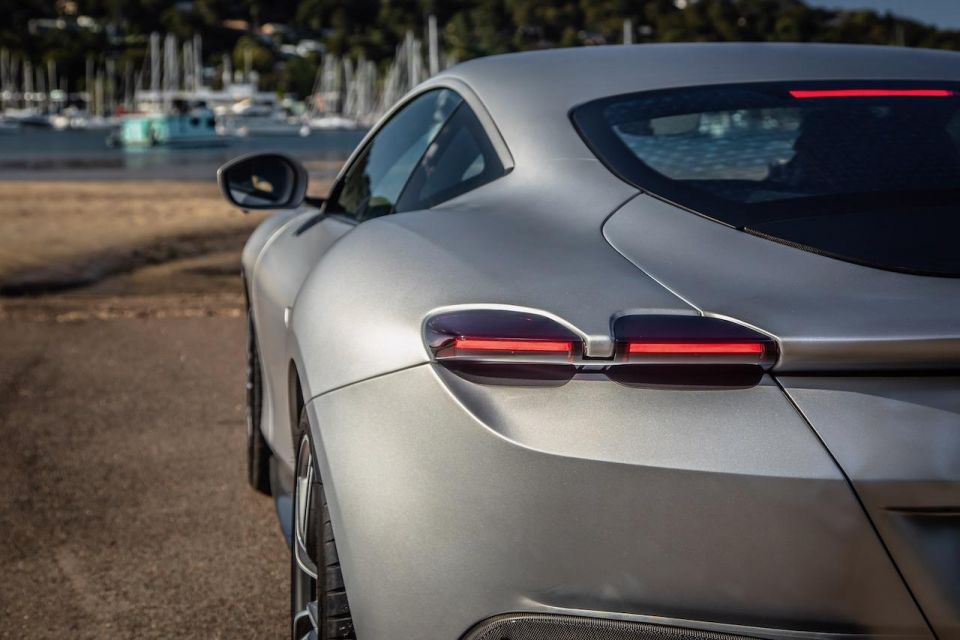
Click the images for the full gallery
MORE: Everything Ferrari Roma
Where expert car reviews meet expert car buying – CarExpert gives you trusted advice, personalised service and real savings on your next new car.


Max Davies
6 Days Ago


Josh Nevett
4 Days Ago


Max Davies
4 Days Ago


Max Davies
3 Days Ago


Neil Briscoe
2 Days Ago


Max Davies
1 Day Ago